г. Петропавловск
North-Kazakhstan region is an integral part of the extensive historical process of formation of the Kazakh nation. Long term annexion of the population into the system of individual states in the 14–15 centuries identified formation of several centers of ethnic consolidation into three zhuzhes in Kazakhstan. Tribes of each of the Kazakh zhuzhes were linked by common routes of nomadic and had a common ethnic territory. Middle Zhuzh, in particular, occupied the areas of Central and North- Eastern Kazakhstan. State association of major ethnic groups of the Kazakh nation into the Kazakh Khanate in the second half of the 15th–16th centuries accelerated the completion of its consolidation. The current nation since the second half of the 15th century has been known under the name «Kazakhs» among neighbors and in written sources reflecting current events of that period.
The main occupation of the population of zhuzhes was nomadic cattle breeding — a kind of economic-cultural type , formed in ancient times in the Eurasian steppes. The prominent Kazakh scholar Shokhan Ualikhanov called early 18th century a terrible time in the life of the Kazakh people, and the 1723rd year — a year of great distress. Jungars invasion in Kazakhstan were accompanied by the loss of life, livestock, destruction of wintering, mass migration of the population to the north and west. Caught in a difficult foreign policy situation, the rulers of the Kazakh Khanate saw the decision of situation in the adoption of citizenship and the patronage of the Russian state. On the 26th of March, 1752 there was issued a decree on the construction of a new line of fortifications. There has been begun the construction of Novoishimsk line that by the shortest route should have connected the fortresses of Omsk and Zverinogolovsk. Central strengthening line has become a fortress of St.Peter incorporated in July 1752 on the right bank of the Ishim river. Later, the fortress became a town of Petropavlovsk.
History of the region is associated with the name of one of the most influential statesmen of the 18th century in Central Asia, Khan Abylay. Abylay belongs to the senior branch of descendants of Zhanibek Khan, the founder of the Kazakh Khanate. Sultan Abylay together with Khan of the Middle Zhuzh Abulmambet took Russian citizenship in 1740 and was in constant communication with the Russian authorities of St.Petersburg, Orenburg, and Omsk.
Abylay Khan is known as a visionary and wise politician, with outstanding diplomatic skills and talents of a statesman. Thanks to strategic flexibility and maneuverability of his foreign policy, tact of a statesman, he was able to maintain the integrity of the Kazakh state. During his reign in the role of all three Kazakh Khan zhuzhes (1771–1781 years) was marked by the stabilization of the political situation, increase of the prestige of Kazakhstan and the expansion of economic and cultural relations with the peoples of Central Asia and Russia .
During the construction of the fortress of St. Peter Abylay set a precondition — to open a trade center with Russia for the Kazakhs. Thanks to the initiative of Abylay Khan Petropavlovsk grew as a major center of trade during one hundred years.
In the fortress of St.Peter there was planned coronation of Abylay for Khanate. There were brought imperial gifts to Khan such as sable coats, hats and sword. Under various pretexts Abylay refused to come to the fortress to accept his authority fully, fearing complications of relations between Russia and Kazakhstan to China. Later, these gifts were given to Khan without magnificent celebrations.
Over time, originally conceived as a military and defense strengthening, Petropavlovsk strengthening has become political, trade and economic and administrative center. Petropavlovsk grew and developed through transit trade and exchange transactions. Especially turnover of customs in Petropavlovsk became significant in the first half of the 19th century, when, thanks to its activities there was adjusted transit caravan trade with Mongolia, China , Tashkent, Kokand, Khiva. At the turn of the 19th and 20th centuries in the city and surrounding areas there were regularly held fairs and markets. Hotel and exchange yard operated only for trade with animal products.
After the bourgeois reforms of the second half of the 19th century the process of resettlement of peasants in the northern regions of Kazakhstan was intensified. The main stream of immigrants was observed in the central regions of Russia, the northern provinces of the Ukraine during the Stolypin agrarian reform. The tsarist government regulated and encouraged this process by providing farmers loans for the construction and benefits. The next phase of resettlement (Ukrainians, Belarusians, Russian, and Tatars) was associated with the development of virgin lands in the second half of the 50s of the 20th century. Colonization of Kazakhstan with Tatars rooted in the historical period of the Mongol-Tatar invasion in the 13–15 centuries. In the 17th century Bukhara rulers sent Tatar mullahs to spread Islam in Kazakh steppe. Construction of the fortress of St.Peter and the development of local trade led to resettle merchants and peasants of the number of Tatars (Kazan , Tyumen , Kasimov) into Northern Kazakhstan. There appeared many Tatar settlements within the boundaries of the current Mamlyutsky district, Kyzylzharsky district, and district named after M.Zhumabayev. Ancestors of todays Germans appeared in the Northern Kazakhstan in the 18th century and their emigration continued until the late 20th century.
The opening of the station Petropavlovsk of Trans-Siberian Railway in 1894 contributed to the development of economic infrastructure in the region, which greatly increased the possibility of trade.
In 1921 construction of the railroad Petropavlovsk- Kokchetav started. This line was extended to the station Borovoye resort in 1927. Since February 1935 regular postal and passenger flights of light aircraft type “AP” were opened in Priishimye.
Since 10.10.1929 there began regular local broadcast transmission of Petropavlovsk radio. Petropavlovsk Pedagogical Institute was opened in 1937. In the 30s there operated the following technical colleges: meat-industrial, railway, land management, planning and economics, veterinary, construction, cooperative, agricultural, forestry technical school and 4 pedagogical.
In the 20-30s well-known writers and scholars M.Zhumabazev, I.P.Shukhov, S.Mukanov, G.Musrepov, S.Markov, V.Ivanov, G.Tveritin, M.Dauletbaev, S.Shaymerdenov, E.Buketov, G.Belger. Zh.Syzdykov and others lived and worked in the region.
Since 1920 the local Drama Theater restarted its work. A cinema worked too. In the 30 years there were built 30 hospitals in the region. There was opened Kazakh Institute of Physical edge treatments in Petropavlovsk in 1932. One of the leaders of the institute was P.A.Nefedov — neurologist, organizer of public health of the region.
Regional industrial complex was created during the years of the Great Patriotic War, in the first months of hostilities there was evacuated the equipment of 20 industrial enterprises into Petropavlovsk. North-Kazakhstanis sent about 120,000 people to the front line, about 55,000 to the labor army, and more than 45,000 of them were killed in battles. During the Great Patriotic War 53 North-Kazakhstanis were awarded with the title of Hero of the Soviet Union, and 11 men became full holders of the Order of battle Glory. There was created the military-industrial complex of plants and was built CHP-1 in Petropavlovsk.
Difficulties of postwar reconstruction of agriculture in 1954 were resolved through the development of virgin and fallow lands. First troop of virgin soil workers arrived in North-Kazakhstan region on the 1st of March 1954 from Alma- Aty, the second troop train — from Moscow. During the years of virgin land there were organized 19 new farms.
In the 70-80s there was a sharp increase in industrial production, transport and construction industry. There were already 92 industrial enterprises in the region, 14 of which were of Union subordination and 38 of Republican. As in many other regions of the country industry in the region has developed one-sided and was focused mainly on the creation and development of enterprises of a defensive nature.
The development of a mixed economy with market relations has begun in the region since 1990. Foundation of engineering complex became enterprises of former defense industry: JSC “PZTM”, “ZIKSTO”, “Plant named after S.M.Kirov”, “Munaymash”, LLP “Plant MLD” and “PPEIM”.
State network of cultural and educational institutions includes 355 cultural facilities, Regional Drama Theatre named after N.Pogodin, Kazakh Music and Drama Theatre named after S.Mukanov, Regional Philharmonic and Puppet Theater, 270 libraries, 70 clubs and houses of culture. Television broadcasts on three local channels.
Information about North-Kazakhstan region
Geographical location. The Severo-Kazakhstan region is located in the north of Kazakhstan, occupies the southern edge of the West Siberian Plain and part of the Kazakh melkosopochnik. In the relief there are numerous lake depressions, steppe depressions, low manes and humps alternating with inter-manic basins. Heights from 115— 120 m in the northeast to 200 m in the south and southeast. The southwestern part of the region belongs to the Kazakh melkosopochnik (Sary-Arka) and is represented by the northwestern part of the Kokshetau upland. Sary-Arka is an ancient mountainous country, the folded structures of which originated in the Paleozoic. Over time and under the influence of natural factors, the mountain relief has taken bizarre forms. The hills covered with coniferous forests are located near the basins of fresh and salt lakes with beautiful sandy beaches. In the forest-wall zone, you can observe a large number of birch spikes, hence the poetic name of the area — "The Edge of white birches".
Climate. The position of Northern Kazakhstan in the depths of the largest continent determines the sharp continentality of its climate, the characteristic features of which are a long cold winter with strong winds and blizzards, a short but hot summer. The average temperatures of the coldest month of January are about -18.5 C in the north, about -17.6 C in the south, and on the coldest days reach -45"C. In July, the average temperature reaches +19"C in the north and +19.5'C in the south, and on the hottest days up to +41 C.
Territory. The North Kazakhstan region was formed in 1936. It has existed within the modern borders since April 8, 1999. Area 98.04 ti.ic.kb.km , which is 3.6 percent of the territory of the republic. From a bird's-eye view, it looks like a green island. On one side it is bordered by the Ishim River and a lot of old trees, on the other — birch stakes and blue saucers of lakes. Unique in their significance in the forest-steppe zone are: the Serge reservoir, the Shalkar and Imantau natural zones, botanical sanctuaries and relict pine forests.
Flora and fauna. The presence of different ecosystems determines the diversity of animal species. There are up to 160 species of mammals and about 200 species of birds. There are: elk, Siberian roe deer, wild boar, wolf from predatory, foxes — common and korsak, hares — white and hare, raccoon dog, etc. A large number of lakes (over 3000) provides excellent opportunities for fishing. In the water.there are pike, crucian carp, perch, ruff, ide, carp, whitefish.
Population. The population is 535.3 thousand people. Representatives of 95 nations and nationalities live in the Northern Priishimye. There are 12 national associations and cultural centers (Kazakh, Russian, Tatar, Bashkir, Korean and others). Ethnic composition of the population: Kazakhs — 32.3%, Russians — 48.5%, Ukrainians — 6.3%, Germans — 3.9%, Poles — 2.7%, Tatars — 2.2%, Belarusians — 1.2%, other nationalities — 2.9%.
The administrative center is Petropavlovsk. It is located on the right bank of the Ishim River. The population of the city is over 208,979 thousand people.
In the immediate vicinity is the capital — the city of Nur-Sultan — the financial, scientific and cultural center of the republic.
Petropavlovsk has an airport that meets international standards, regular flights to Astana and Almaty are carried out.
Highways and railways that connect Petropavlovsk with major cities of the Republic of Kazakhstan and the Russian Federation pass through the region.
Monument to Karasai and Agyntai batyrs
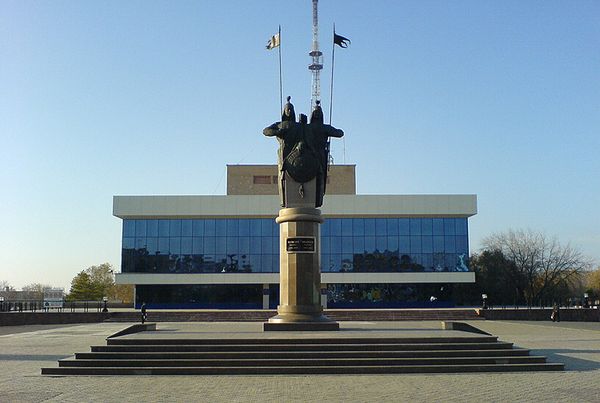
Batyrs Karasai and Agyntai are national heroes of Kazakhstan who lived in the middle of the XVII century. Being loyal companions during their lifetime, they were buried next door, on the territory of one of the districts of the North Kazakhstan region. Batyrs Karasai and Agyntai participated in many battles with the Dzungarian army, while Karasai commanded the militia, and Agyntai repeatedly fought in duels with enemy soldiers.
Location: Constitution Street of Kazakhstan 1.
Taken from the website: https://rutraveller.ru/place/97767
Astrophysical Observatory
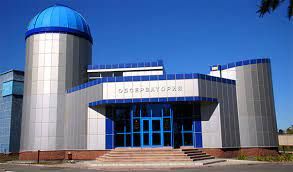
One of the main attractions of Petropavlovsk is the Astrophysical Observatory, which is part of the complex of the North Caucasus State University named after M. Kozybayev. This observatory is equipped with a telescope with a Richie-Chretien system. This telescope ranks second based on its size in the country. In addition, there is a planetarium in this observatory, the dome of which is decorated with one of the buildings. The projector in this planetarium can create an accurate color image of more than three thousand stars located in two hemispheres of the firmament, while it can project a view of the firmament from anywhere on earth. With the help of the observatory, scientific studies of the firmament are being conducted, several discoveries have been made. His observations are conducted in the evening only if the weather is clear.
Location: Pushkin Street, the territory of the North Kazakhstan State University named after M. Kozybayev
Muslim mosque of Kyzylzhar
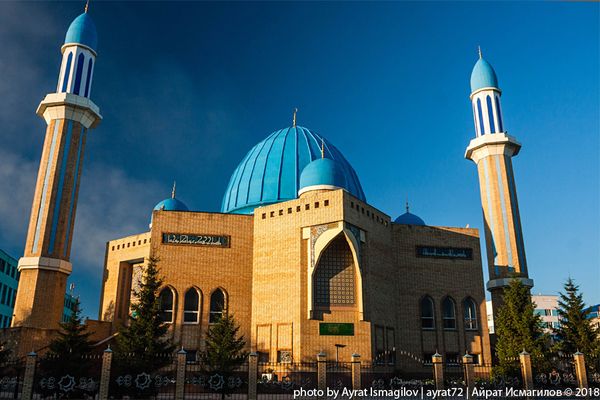
The Kyzyl Zhar Mosque is located in the central part of the city of Petropavlovsk. This is the main mosque of the city, the first stone of which was laid in the 200th year. It can accommodate up to one thousand people, and the total area of the mosque is 1500 square meters. Translated into Russian, the name of the mosque means "Red Yar".The mosque building is an eight-pointed star at the base. Its main volume is crowned with one large and four small hemispherical domes of blue color. The height of the main dome is 28 meters.
The construction of the mosque was carried out for four years, with funds from voluntary donations from parishioners and was completed with the financial support of Saudi Arabia.The grand opening ceremony of the mosque was attended by representatives of the local Muslim and Orthodox clergy, as well as guests from neighboring countries.
Location: at the intersection of Mira and K. Sutyusheva streets.
Read in full on: https://rutraveller.ru/place/97761
North Kazakhstan Regional Museum of Local History
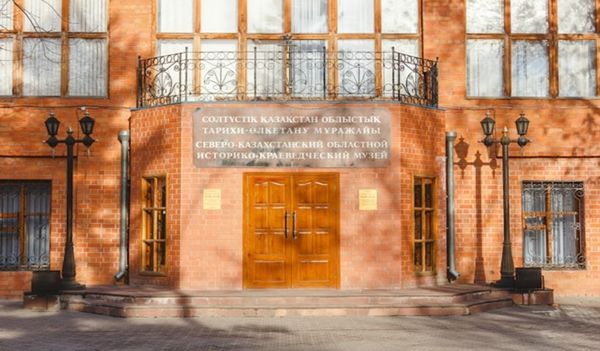
The North Kazakhstan Regional Museum of Local History was founded in 1924. It is located in a complex of buildings – monuments of architecture of the late nineteenth century. The museum has 350 thousand exhibits in its collections.To date, the total area of the museum complex is about 2400 sq.m., the exposition area is 2000 sq.m.
The exposition is built taking into account the general historical periodization, from ancient times to the present.
A significant place is occupied by the exposition reflecting the development of Kazakhstan in the years of independence. It includes three halls - "Kazakhstan in the years of independence", "North Kazakhstan region in the years of independence", "Kazakh-Russian relations". On the basis of documents and photographs, a dynamically developing economy, the democratization of society, and international relations are shown. A significant place is given to Kazakh-Russian relations, cooperation between the North Kazakhstan region and the border regions of the Russian Federation.Visitors of the museum will be able to get acquainted with the materials of archaeological research of Northern Kazakhstan, with unique exhibits on the ancient history of the region. The exposition on the history of the formation of the Kazakh statehood and the ethnography of the Kazakh people has been significantly expanded.
Location: 48 Constitution Street of Kazakhstan
Taken: https://skomo.ucoz.kz/
Abylai Khan 's residence
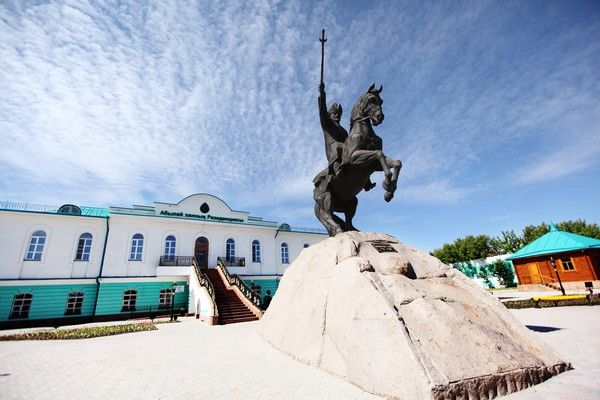
The biography of Abylai Khan is a source of a huge amount of important historical data about Kazakhstan of the XVIII century, and his ideas about political and territorial independence, preservation of unity are clearly reflected in the priorities of the modern state.
The main idea of the museum remains the presentation of the life and work of Abylai Khan. The museum consists of four halls, in which the materials of the past years associated with the name of the great ruler are presented. In the first hall you can see various fragments about the childhood and youth of the young khan, get acquainted with the history of his origin. The second hall shows a traditional Kazakh-type dwelling where Abylai lived, and in the third there are household items, weapons, khan's clothes and, of course, the figure of the khan himself. The fourth room will introduce visitors to the personality of Abylai Khan and some aspects of his work as a visionary ruler and a talented diplomat.
Taken: https://kazakhstan.travel/tourist-spot/ru/134/ablai-khans-residence
The Abylai Khan Residence Museum Complex is located at 1B Karim Sutyushev Street.
Botanical Garden
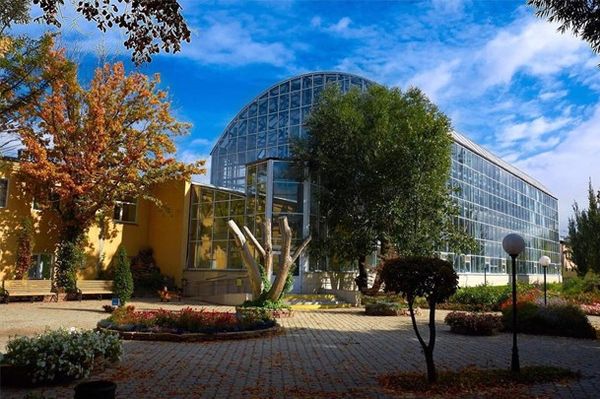
A unique complex of landscape art is located in the city of Petropavlovsk, where palm trees and lemons, oriental thuja, jasmine and other exotic plants from around the world are green. The garden was founded in 1912 and is one of the oldest in Kazakhstan.
The uniqueness of the complex lies in the fact that initially the prerequisites for its creation were industrial purposes, to meet the needs of the meat canning plant in ingredients – onions and bay leaves.
In 1912, during the construction of the Siberian Cannery, twelve laurel trees were brought from St. Petersburg, which were cultivated in deep Russian greenhouses. History.
Since then, the complex has been further developed and currently serves as: scientific and educational, exposition (for cultivating plants and showing them to students and students), scientific (for conducting educational and scientific research and preserving plant gene pool collections), nature reserve (for preserving and reproducing unique, typical and rare communities of natural vegetation of the region) and a public (for serving visitors and organizing excursions) base.
The Botanical Garden is a specially protected natural area, the main activity of which is the protection, reproduction and use of rare flora, conducting educational, sightseeing tours, showing plants to visitors, as well as exchanging them with other institutions of the botanical profile.
The exposition of the Botanical Garden includes:
Greenhouse;
Winter Garden;
Squares;
Mini Arboretum;
Pond for waterfowl;
Vivarium (winter garden) – for keeping and breeding animals and birds, a shelter for wounded wild birds and animals;
Zoocorner;
Aviaries with exotic bird species;
Aquamir with exotic fish species.
Location: 41 Medvedeva str.
Taken: https://ehonews.kz/botanicheskij-sad-kazahstan-g-petropavlovsk/
Neptune Water Park
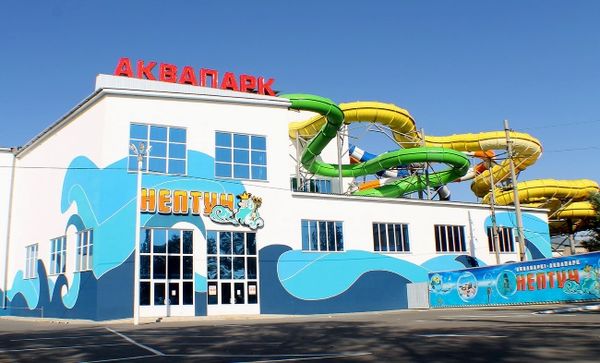
The complex includes a Turkish bath "Hamam", a Russian bath, a Finnish sauna, seven water attractions, Canadian company White Water, of which there are 4 attractions for adults, 3 for children, 10 hydro—massage installations, 4 Jacuzzi baths, a fitness club, a gym, medical rooms.The water park accepts 1000 people per hour, who will be met by 1500 square meters of water surface, 4 slides 20 m high, a 25 m sports pool, a solarium, a SPA salon. The facility has all the conditions for a full-fledged healthy rest. Visitors can exercise and train in a specially equipped gym. A separate area with a 40 cm deep pool, slides and other attractions has been created for younger children.The average air temperature in the complex is 28-31C, full filtration and water purification will be carried out every three hours, the surrounding area is ennobled with asphalt concrete and paving stones, landscaping with decorative species of coniferous and deciduous trees is carried out. At the entrance to the water park there is a monument to the famous cartoon character Captain Vrungel.
Location: 41 Medvedeva str.
North Kazakhstan Regional Museum of Fine Arts
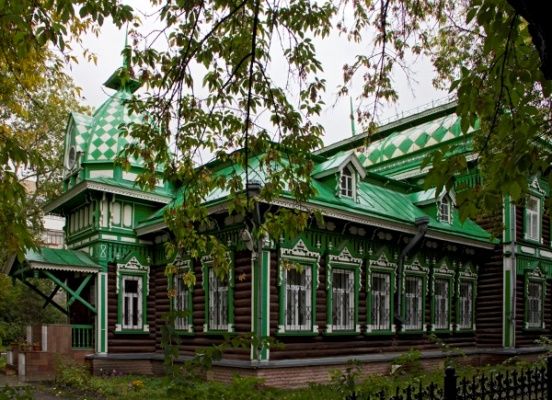
The North Kazakhstan Regional Museum of Fine Arts was opened in Petropavlovsk in 1989, in a building that has been a monument of history and culture of Kazakhstan since 1982. The basis for its opening was the Department of Fine Arts of the Museum of Local Lore.
About 5000 exhibits are presented on an area of 394 square meters, these are primarily graphic works by famous artists V.Favorsky, G.Nissky, M.Mayofis, G.Poplavsky, M.Miturich-Khlebnikov, R.Khachatryan, G.Khandjyan, P.Rechensky, V.Antoshchenko-Olenev, M.Kisamedinov, A.Beisembinov.
The creations of Kazakh masters in the painting section are I.Stadnichuk, V.Krylov, N.Khludov, A.Ismailov, L.Leontiev, A.Kasteev, works by sculptors N.Nikoghosyan, O.Komov, S.Baldano, M.Rapoport, a collection of decorative and applied art, works of children's creativity. A literary department was opened at the museum in 1992, in which there are about 2,600 exhibits - works and manuscripts of writers, their personal belongings and letters
Location: 65 Abaya Street.
Motley
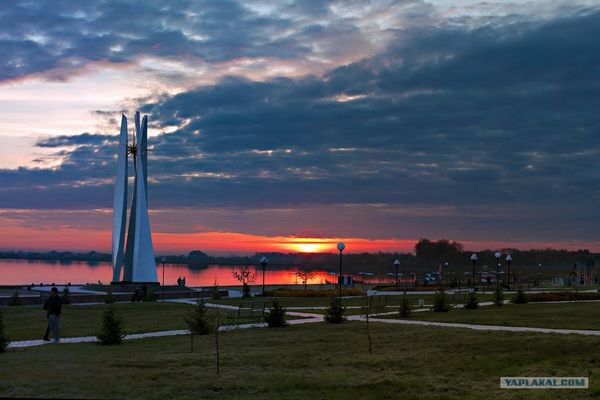
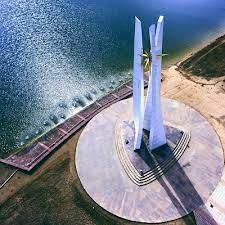
Motley Lake is a very popular place, with clear and blue water. A sandy beach, a gentle entrance to the water, benches and umbrellas — all this is on the Motley lake. A wonderful parking lot has been created near the lake, and there is also a ship cafe here. The lake is located on the outskirts of the city, but attracts many vacationers here. A boat with scarlet sails has become a popular entertainment for vacationers, on which a sailor can take you for a ride. Near the lake on the beach there is a children's playground with slides and swings. You can get to the lake either by car or in a couple of minutes on foot from the stop "lake Motley".
Taken: https://www.komandirovka.ru/sights/petropalovsk/ozero-pestroe/
Cathedral of the Holy Apostles Peter and Paul
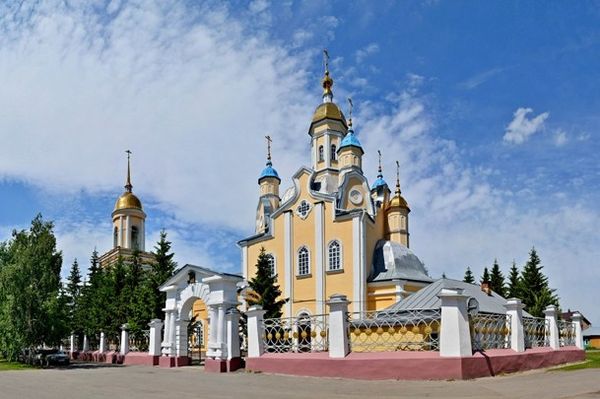
The Cathedral of the Holy Apostles Peter and Paul is one of the oldest surviving buildings in the city and is an architectural monument. The original church was founded in 1803, in 1812 it was dismantled, and on October 22, 1813, a new stone three-altar church was laid on the same site. The main throne is in honor of the Holy Apostles Peter and Paul, the northern one is in honor of the Holy Wonderworker Nicholas and the southern one is in honor of the Intercession of the Most Holy Theotokos. All the chapels were consecrated consecutively: in 1815, 1818 and 1821. In 1838, the stone bell tower was badly damaged by a fire. It was dismantled in 1839 and a new bell tower was laid instead in 1844, standing separately from the church, connected to it by a stone corridor. The construction of the bell tower was completed in 1848. After the October Revolution, the church was closed. And only in 1946, the regional council of the executive committee of Petropavlovsk handed over the building of the Podgorny church to the community of believers. By the time of restoration, the appearance of the temple was a sad sight: the altar and iconostasis were destroyed, many icons and kiosks were barbarously destroyed. The painting on the walls was covered with a layer of soot and dirt. In front of the central altar, a huge exhaust pipe towered up to the dome. There was a huge brick oven in the Nikolsky chapel.
The church was badly dilapidated and partially ruined, there were no crosses and bells, but by 1952 the church was completely restored by the parishioners. Since 1947, church services have been held in the church, continuing to the present day.
Taken: https://www.pbe.kz/sobor-svyatyh-apostolov-petra-i-pavla-0
Location: 97 Kominterna str.
Catholic Church of God's Mercy
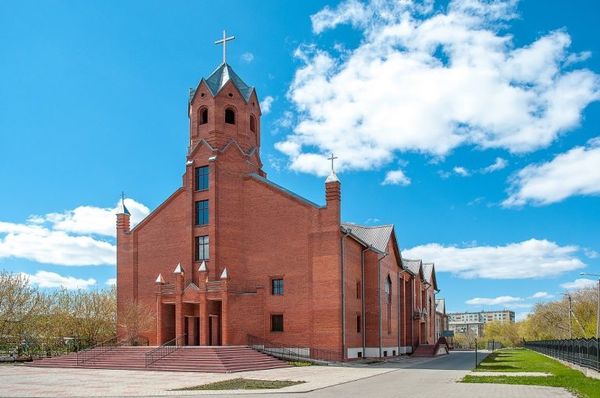
The Catholic Church of God's Mercy is located in the central part of the city of Petropavlovsk. This is the main Catholic church of the city, located on Zhambyl Zhabayev Street. The new Church of God's Mercy was inaugurated in April 2012 with the participation of representatives of various Catholic communities of the country. Financial assistance for the construction was provided by believers from Poland, Brazil, Germany, as well as residents of the city.
During the Russian Empire, the city of Petropavlovsk was a famous place of exile, where a significant number of Catholics were sent, most of whom were ethnic Poles, Lithuanians and Germans. Trying to establish an active religious life in a new place, the local Catholic community founded the first Catholic church of the Sacred Heart of Jesus in the city in 1911. In Soviet times, the church was closed, and after the country's independence, the building was closed for reconstruction.
The church is a classic example of a modern Catholic church, the architecture of which traces the motifs of traditional Neo-Gothic churches in Poland and the Czech Republic. A single-nave red brick building with a gable roof is decorated with a bell tower, in which small bells are installed. Later, a free-standing bell tower with large bells will be built next to the church.
Location: 198 Zhambyl Zhabayev str.,
Read in full on: https://rutraveller.ru/place/97765
Victory Park
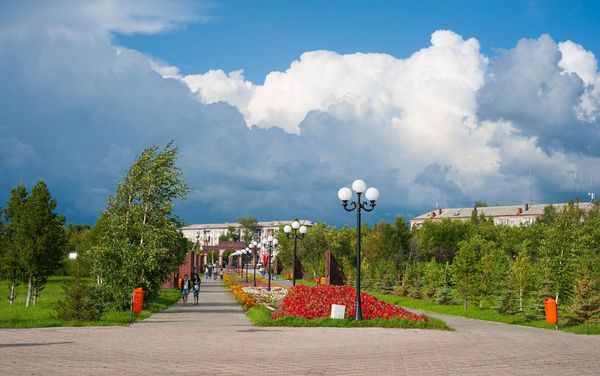
Victory Park is one of the memorial complexes dedicated to the victory in the Great Patriotic War. Located on the outskirts of the city on the road to 20-mkr along the Embankment street. It was founded in 1967 and opened in 1985. After the lapse of time, it was forgotten and only in 2003 funds were allocated for restorations.Victory Park is not only a landmark of the city, but also a place of rest for local residents. The park is equipped with 2 lawns for mini-football, benches with backs, numerous monuments erected in honor of the heroes and participants of the Great Patriotic War, a playground for children, basketball and volleyball courts, exercise equipment and swings. In other words, the park has everything you need for sports and recreation. Usually people come to the park with their families. Everyone, regardless of their age, can have fun and usefully spend time in this park, as there is a hobby for everyone in the park. The park offers an unusually beautiful view of the Ishim River, and on its shore. On warm evenings, locals enjoy a beautiful sunset from the shore. The roads are paved, the paths are paved with paving stones.Strolling through the park and reading about the exploits of our heroes, residents have a good time and do not forget about those who sacrificed their dear lives for the peaceful sky above our heads.In 2015, a monument to the liberator soldier was erected in the park in honor of the 70th anniversary of the Victory. There are also 2 real cannons installed in the park, which have been preserved since the Second World War. The park resembles the era of the war because of the dugout located in it.
Location: Embankment street 7
Estate of merchant Valit Yangurazov
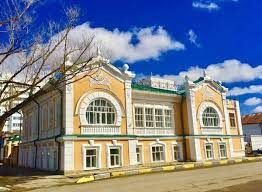
The estate of merchant Valit Yangurazov is a monument of the history and culture of the city of Petropavlovsk, erected in the late XIX - early XX centuries. The estate has a very interesting and at the same time sad history.According to legend, the merchant Yangurazov went to St. Petersburg to solve his trade affairs. During his stay there, he fell in love with a capital beauty and immediately offered her his heart and hand. The girl accepted the merchant's offer, but with one condition. She asked Valit Yangurazov to build in his steppe exactly the same house in which she lives in St. Petersburg. The merchant fulfilled his promise. I specially invited an Italian master to build the house. The chosen one moved to Petropavlovsk, but the long-awaited wedding never took place. According to one version, a couple of days before the wedding, Yangurazov died. The house he built was called the "Bride's House".The two-storey house has a U-shaped shape in the plan. The architecture of the building is quite peculiar and interesting. It clearly shows elements of late Baroque and modern. The symmetry of the composition of the main facade gives the building special rigor. At the edges there are peculiar columns with an arch, domes and a spire in the center. On the second floor of the house there are beautiful carved doors and colorful ceilings.The first floor of the merchant's house is made of brick, and the second floor is made of wood. A huge number of elements of floral ornament are carved on the cornice of the house. The facade and interior of the building are decorated with decorative stucco. However, the biggest attraction of the house are the two fireplaces located in the side rooms.In the early years of Soviet power, the estate was transferred to the administrative building of the Peter and Paul Council of Deputies. In the 20s, the headquarters of special forces units was located here. In the 60s. the building housed the regional finance department, and after the State Insurance.
Location: Ulyanova Street, 68
Taken: https://www.komandirovka.ru/sights/petropalovsk/dvorets-kulturyi/
Drama Theater named after. Pogodina
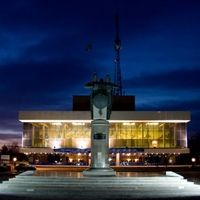
Due to the fact that at the end of the 19th century Petropavlovsk was already a major trade and economic center, not only merchants and merchants, but also creative people began to come here. The city grew, the number of residents in it increased, and local actors, rallying into a small team under the leadership of A.G. Gorbunov, began to give performances. Interest in the theatrical art grew and the townspeople actively assisted in the construction of a "stone house" for the theater in 1906, collecting the necessary amount for this. The productions appeared one after another and with each premiere the works became deeper and more professional. The favorite works of the directors were the creations of A.N. Ostrovsky.The situation in the theater changed dramatically with the advent of Soviet power. From a semi-amateur theater, it turned into a full-fledged city theater with new tasks and a name. Now it was called the "Russian Soviet Theater", and it was headed by N. Sarmatov. In the repertoire of the Russian Drama Theater. The works of both classics appeared: L. Tolstoy, A. Pushkin, A. Chekhov, and contemporaries: N. Pogodin, M. Auezov, S. Mukanova.
Location: Constitution of Kazakhstan str., 1.
Taken: https://ticketon.kz/place/kgkp-oblastnoj-russkij-dramaticheskij-teatr-imnpogodina
North Kazakhstan Regional Kazakh Musical and Drama Theater named after S.Mukanov
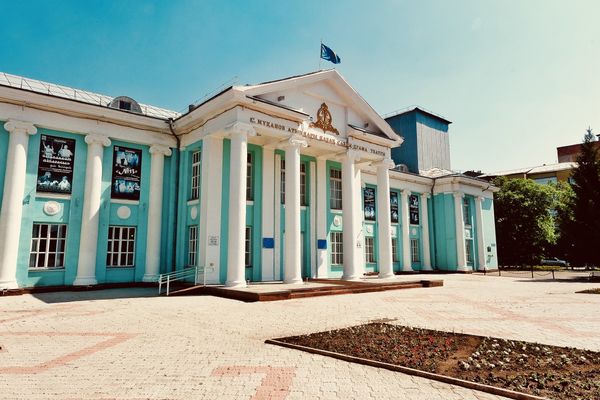
The North Kazakhstan Regional Kazakh Musical and Drama Theater named after Sabit Mukanov was founded in 2000 with the direct support of the former President of Kazakhstan Nursultan Nazarbayev. The initiative to open the Kazakh Drama theater in Petropavlovsk was made by director Orazaly Akzharkyn-Sarsenbek, as well as graduates of the T.Zhurgenov National Academy of Art. This initiative was supported by the President of our country, and in 2000 the Kazakh Music and Drama Theater opened its doors to the audience.
The opening of the young theater coincided with the 100th anniversary of the great writer Sabit Mukanov, in connection with this date, the theater was named the North Kazakhstan Regional Musical Drama Theater named after S. Mukanov. It is symbolic that the new theater began its creative path with the premiere of the play "The Meteor that Flashed" based on the work of S. Mukanov.
Location: 195 Zhambyl Zhabayev Street
Taken: https://qazaqstan3d.kz/ru/place/view?id=124
North Kazakhstan Puppet Theater
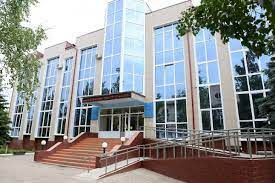
The Puppet Theater of Petropavlovsk received its first visitors in 1990 . It was the premiere of the play based on the work of A. Milne "Winnie-the-Pooh and everything-everything-everything". For the first five years, a troupe of directors and actors who were specially invited from various puppet theaters in Russian cities worked at the Petropavlovsk Puppet Theater. During its existence, the North Kazakhstan Puppet Theater has staged more than 45 amazing performances, which were watched by more than a million viewers. Each staged performance was appreciated.To date, the puppet theater is very popular in the city. The directors and actors of the theater are in constant creative search, replenishing their repertoire with new interesting performances.In the traditions of the North Kazakhstan Puppet Theater - exchange tours with the Kurgan puppet theater "Gulliver" and Omsk puppet theater "Harlequin". There are many interesting events taking place in the Peter and Paul Puppet Theater. A large number of talented people have worked and are working here, who have made a huge contribution to the formation and creative development of the theater. A friendly young team has a powerful creative potential.
However, the main value of the North Kazakhstan Puppet Theater is its devoted audience. It is here that young fans of theatrical art learn to make strong friends, empathize and love, take care of the defenseless and weak. Thanks to its audience, the theater creates new interesting performances, looks to the future with confidence!
Location: 69 P. Vasiliev Street
Taken: https://www.votpusk.ru/country/dostoprim_info.asp?ID=23697
Date of publication: 11.09.2018 12:01
Recent changes page: 04.08.2022 17:45


